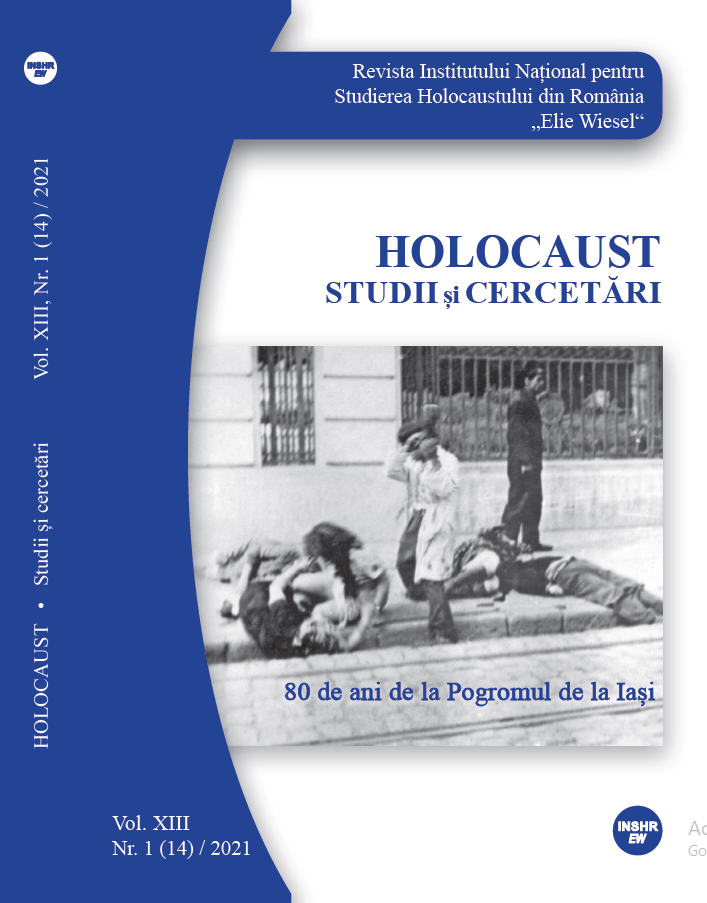The State of Siege and the Holocaust in Romania: An Incursion into the Origins of the Legal Framework for the Operation of the Camps under the Antonescu Regime
The State of Siege and the Holocaust in Romania: An Incursion into the Origins of the Legal Framework for the Operation of the Camps under the Antonescu Regime
Author(s): Corneliu PintilescuSubject(s): Criminal Law, Politics and law, Interwar Period (1920 - 1939), WW II and following years (1940 - 1949), Fascism, Nazism and WW II, History of the Holocaust, Social Norms / Social Control, Penal Policy, Sociology of Law
Published by: Institutul National pentru Studierea Holocaustului din Romania ELIE WIESEL
Keywords: state of siege;Holocaust;camp;Târgu Jiu;dual state;
Summary/Abstract: The state of siege turned into an almost everyday experience in interwar Romania. From 1916 until 1928 and from 1933 until the end of the second World War, Romania was either partially or entirely under state of siege. This abuse of the state-of-siege mechanisms heavily contributed to the routinization of political violence and fuelled the crisis of the liberal order during the 1930s. Thus, it is no surprise that one of the vehicles of installing the dictatorship of King Carol II was Decree no. 856 from February 1938, which officially turned the state of siege into a permanent reality. In this context, General Ion Antonescu found, when seizing power in september 1940, a complex legal and institutional framework in charge with implementing the state of siege, entailing: the state-of-siege legislation, the secret services, the military prosecutor’s office, the military courts, and the political prisons. During Ion Antonescu’s rule, this legal and institutional framework was extended and turned into an effective tool for ethnic cleansing. Emergency narratives and state-of-siege legislation were used for carrying out deportations, for establishing and operating ghettos and concentration camps, and for the activity of the military courts. Drawing on Ernst Fraenkel’s concept of “the dual state”, this study aims at investigating the connections between the state of siege legislation and the institution of the camp in Romania under Antonescu’s regime. Because the issue of the camp under Antonescu’s regime is a complex one, which needs more space to deal with than an article could offer, this contribution will focus only on the case study of the Tȃrgu Jiu camp, as a model inspiring the development of other camps. The study is divided into two parts: (1) the former provides an overview of the state-of-siege legislation, its use in interwar Romania, and the instrumentalization of the narratives of national emergency during Antonescu’s seizure of power; (2) the latter part analyzes the role played by the state-of-siege legislation as a legal framework used to establish and operate camps during Ion Antonescu’s regime.
Journal: Holocaust. Studii şi cercetări
- Issue Year: XIII/2021
- Issue No: 14
- Page Range: 339-367
- Page Count: 29
- Language: English
- Content File-PDF

